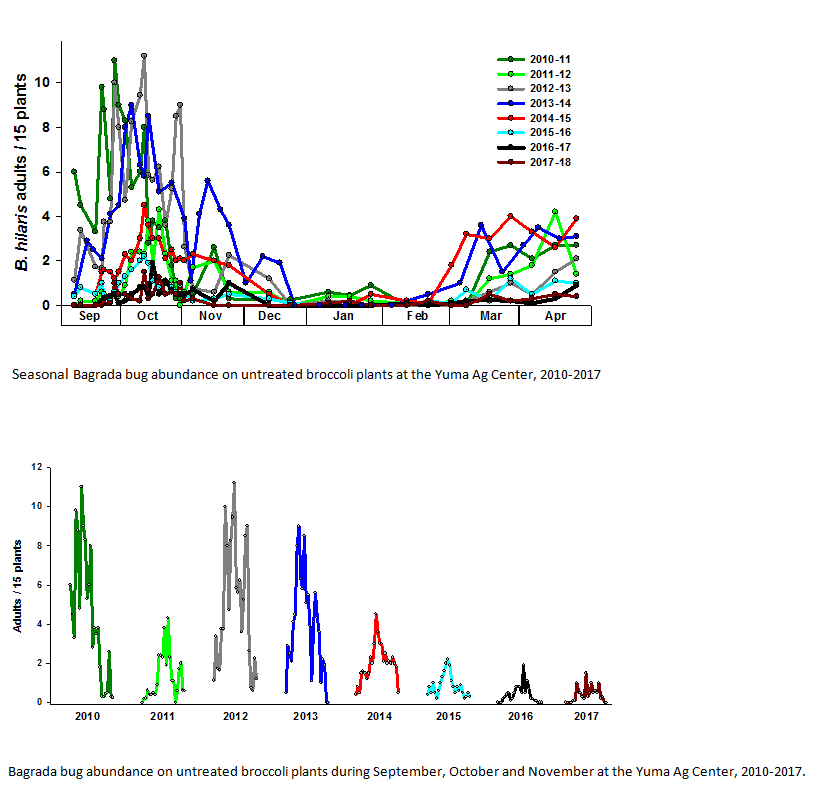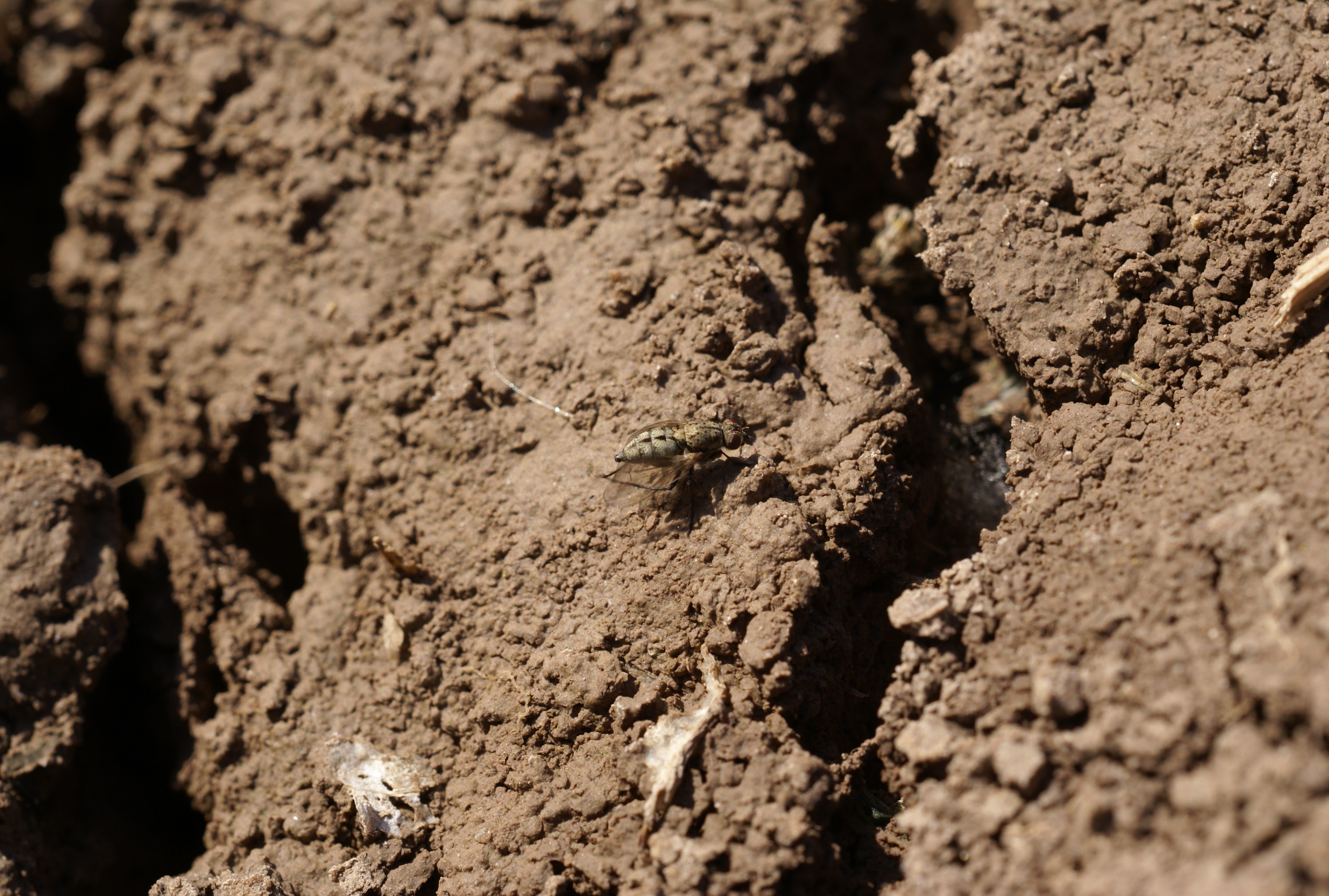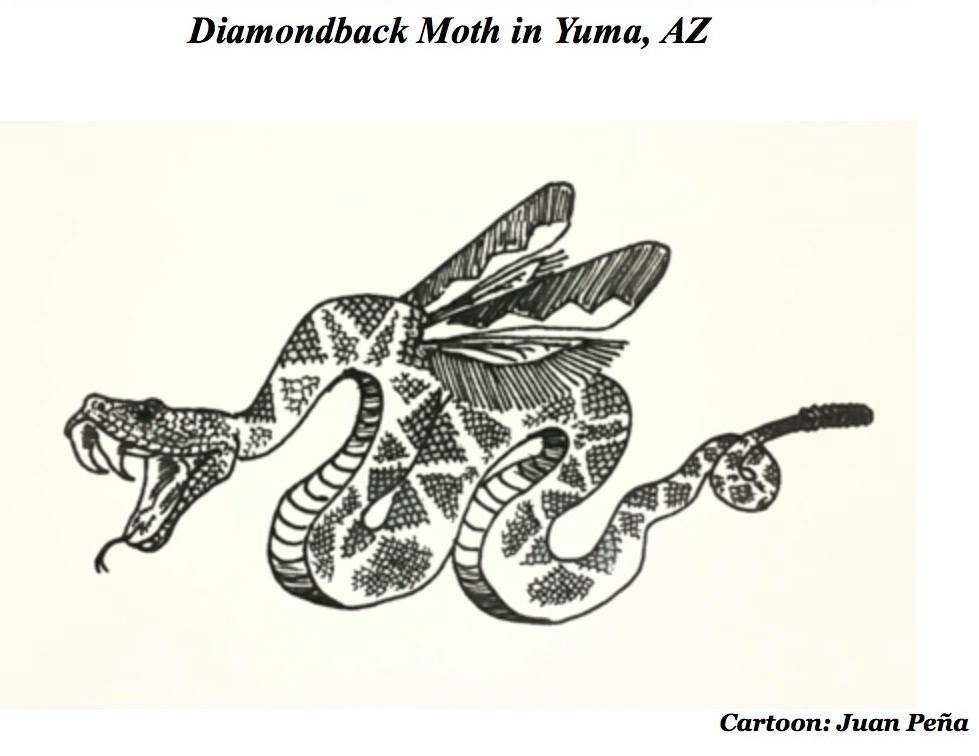
|
|
|
|

|
|||
|
|
|||
Experience over the past eight years has shown us that adult bagrada bugs generally begin to appear on direct seeded and transplanted brassica crops in early September. Research conducted on untreated broccoli and cauliflower plots at YAC have shown that mid-September has historically been the time that bagrada begin to show up in large numbers; peak abundance of bagrada bug has occurred from late September to early October (see graphs below). I’ve always felt, but have not been able to prove yet, that these peak occurrences coincide with the end of the monsoon season and the much-reduced humidity. However, it’s been difficult to observe this since there has been a trend of significantly lower bagrada bug abundance since 2014, and last fall was the lightest bagrada populations since we started tracking them in 2010 (see graphs below). In the past week or so, I’ve had a couple of reports of bagrada beginning to show up in transplanted cabbage and cauliflower, but only up in light numbers. These reports have mainly been coming in from Roll, Tacna and Texas Hill. No reports out of Imperial Valley and Coachella yet. We have been finding light feeding damage on direct seeded broccoli at the Yuma Ag Center, but well below the action threshold (5% of plants with fresh feeding signs). So, what should a PCA expect for this season? Can’t say for sure, but here are a few management tips to consider. (1) When monitoring for bagrada bugs PCAs should primarily focus on fresh feeding signs on new plant tissue, and adults later in the day when they are most active. (2) Direct-seeded and transplanted crops are susceptible to bagrada bug infestations during stand establishment and up to the 6-leaf stage. (3) We recommend that control should be initiated immediately if you can readily find 5% or more of plants with fresh-feeding signs. This can include chemigation or aerial applications with pyrethroids. Contact insecticides such as pyrethroids, Lannate, and Lorsban should be used once stands are lined out. Once pipe is pulled and plant size increases up to the 2-leaf stage, or on tagged transplants, consider alternating to dinotefuran (Venom/Scorpion) for protecting plants from bagrada feeding. This neonicotinoid will also provide knockdown of adult whiteflies and nymphs. (4) Also, growers who planted Nipsit (clothianidin), should begin to closely monitor for fresh feeding damage around 14 days after emergence. More information on bagrada bug management on fall cole crops can be found in: Bagrada Bug Management Tips for the Low Desert 2018. | |||
| Back | |||
|
For questions or comments on any of the topics please contact Marco Pena at the Yuma Agricultural Center.
|
|||
|
Home |
Cotton | Veggies |
Forages | Grains
| Citrus |
Crop x Crop Insects | Diseases| Weeds | Pesticides | Economics | News | Weather | Research | Photos | Contacts | General Info. Copyright © 2001 University of Arizona, College of Agriculture and Life Sciences Webmaster: Al Fournier (acis@ag.arizona.edu) |
|||



